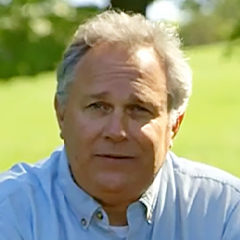
Shooting Winter Landscapes
Layne KennedyThere are so many options for taking amazing winter landscapes. Each person experiences the feeling of the winter differently. Capturing the view in clear precision while evoking your personal emotion is the key to taking an excellent winter landscape.
Winter landscapes are hauntingly beautiful. They are also intensely personal, as each person's experience of winter is different. You want to find the balance between a clear, crisp photograph and a representation of what you are both seeing and feeling. This session teaches you how to shoot those intimate winter landscapes like a pro.
MORE IN THIS COURSE:
- Winter Photography Tips: Exposure, Composition, and Details - Course Preview
- Proper Winter Exposure
- Essential Clothing for Winter Photography
- Gear: What You Need to Know
- Tips for Great Animal Portraits
- Shooting Winter Landscape
- Changing Your Perspective
- Composing Compelling Portraits
- Details Tell the Story
- Getting Creative with Fill Flash
- Lighting for Night Photography
- Take Only Photographs, Leave Only Footprints
Shooting winter landscapes is personal. You know, there's always situations where you go a place, where you know you're gonna be able to get a great shot that shows winter. The photos that we got of the dog teams going by from the top of Blueberry Point on White Iron Lake, we knew that it was a position where you couldn't see any buildings, it was kind of looking towards the wilderness. We were up high enough to where we could see the frozen lake, and kinda sea of white, and the wind was blowing, so it blowing fine snow around, so it almost looked like fog. And then when the dog teams came through this shot, it gave us a lot of options to be able to call this, not only landscape, but we could call it dog sledding, because I was using a 28 to 300 zoom, and so the dogs teams came by, then another dog team turned around, and they went back the other way.
So when they did this, it gave me a lot of options to be able to use some of the trees in the foreground, frame the dog teams as they went through them, as a distance shot where I was shooting wide, and showing the expanse of everything that was taking place. And then other times I could zoom in and get just the dog teams, and a sea of white on the frozen lake, giving me numerous options for this landscape photograph of winter in the north land. So there's always those kinds of options where you get to a great spot, you just milk it and you get as many things, many options, visual options, as you possibly can out of the same shot. Now earlier in the day, we were going down a road that had already gotten some fresh snowfall. We're kind of looking for scenics, and it's the kind of a day where, you know you're driving along, and it's winter everywhere, but no particular winter scene just went shoot me, shoot me, that really depicted the feel of winter in a single frame.
So finally we got down to a low spot where there was a bog, and then at the top of the bog that lined it, the forest had that very kind of almost tree planted growth, all these big red pines, where the canopies were way up high. So all you saw were tree trunks, and it was a very overcast day, and red pines don't have a tremendous amount of color in them anyway. There's no leaves on the deciduous trees, because it's winter, and the snow is kind of covering everything, so it was an interesting photograph with its design in shapes, but it had no color. And while that's okay, when I looked at the scene, I thought, "You know what? This forest is big.
If I take one segment of it, it's not gonna be a good enough landscape, I need more." so I did a series of shots. I did five shots and then stitched them together, and that gave me a panoramic, and then that panoramic of all of these pixie sticks lined up, immediately it came to me that this is the way to shoot this, is in black and white, not in color, 'cause there wasn't any color, and the color that did exist was flat, and heavy and lifeless. Whereas when you look at this scene, the different colorations of the trees, some that were darker barks, some were lighter bark, the snow intermixed, the depth of all of the rows of all of the trees, lent itself to being spoken to in black and white. All of the visual tonalities that existed in that shot, muted as a color image, came alive as a black and white image. So open your mind, let the scene talk to you, and then find the right visual tool to bring it to life.
And winter could just be magical out there. Don't be afraid of the white, don't be afraid of the contrast, don't be afraid of going black and white.


Share tips, start a discussion or ask other students a question. If you have a question for an expert, please click here.
Already a member? Sign in
No Responses to “Shooting Winter Landscapes”